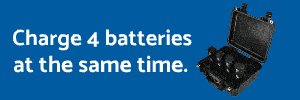- Joined
- Jan 29, 2018
- Messages
- 61
- Reaction score
- 32
- Age
- 47
Read a article of another near miss. Drone comes close to hitting helicopter, Coast Guard says | Peninsula Daily News this one is coast guard vs drone and “50 feet” of separation. While I do feel that is a close call and dangerous, What is next?
107.37 Can be vague
Section 107.37 Operation near aircraft; right-of-way rules. (2018) -
No operation directly above or below aircraft.
“Yielding the right of way means that the small unmanned aircraft must give way to the aircraft or vehicle and may not pass over, under, or ahead of it unless well clear”
I operate part 107 around one of the busiest uncontrolled airports in the US. I listen to to Unicom as I fly. So understanding the flight patterns is a must.
What would your definition of “well clear”? It would nice if the faa gave specific lateral separation rules like 500’ or 1000’ etc
107.37 Can be vague
Section 107.37 Operation near aircraft; right-of-way rules. (2018) -
No operation directly above or below aircraft.
“Yielding the right of way means that the small unmanned aircraft must give way to the aircraft or vehicle and may not pass over, under, or ahead of it unless well clear”
I operate part 107 around one of the busiest uncontrolled airports in the US. I listen to to Unicom as I fly. So understanding the flight patterns is a must.
What would your definition of “well clear”? It would nice if the faa gave specific lateral separation rules like 500’ or 1000’ etc
Last edited:






